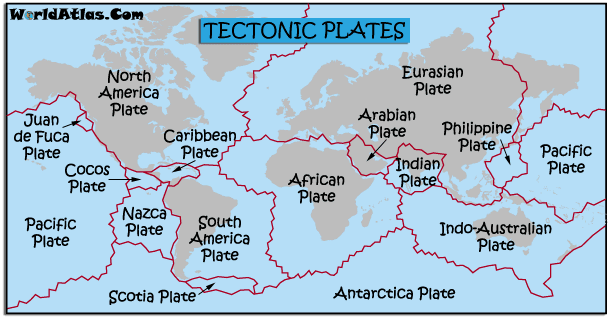1. landforms and oceans are the largest natural features on the earth's surface. the seven largest landforms on Earth's surface are the continents (Africa, Asia, Australia, Antarctica, Europe, South America, North America). these continents yield a variety of features:
rivers - moving bodies of water that move down hill, pulled by gravity, usually fed by rain water, snow melt, or a lake
lakes - a large body of still water that rests inland,
desert - a large, dry area that receives little to no liquid water in the form of rain,
seacoasts - land lying next to a sea or ocean,
glacier - a large, wide, and thick body of ice that slowly moves, carving out vallies,
mountains - a peice of land with sweeped sides that rises sharply from surrounding land (usually more than 1,000 ft),
volcano - mountain or hill created as liquid rock and ash erupt from inside the earth's crust.
oceans are large bodies of salt water that cover over 70% of the earth's surface.
2. The point on Earth's surface that is the greatest distance from sea level is Mount Everest (29,028 feet, 8,848 m).
creative writing: I believe that when small objects such as meteorites or comets enter earth's atmosphere, they have no long-term affect on the lithosphere, atmosphere, or biosphere. I say this because the smaller objects are usually burned off in the outer layers of the atmosphere, and usually don't reach the biosphere or lithosphere, and the the earth's gravity pulls the dust toward the earth and it becomes soil.
Section 2
1. the Earth's layers create movement within the mantle (the layer of molten rock just under the earth's top layer, the crust), which in turn, move the plates on the earth's crust. This creates mountain ranges, volcanoes, hot spot islands like Hawaii, fault lines, and folds in the crust. the solid inner core of the earth, made of iron and nickel, spins faster than the rest of the earth, and creates the magnetic field that protects us from the sun's harmful solar wind.
2. The movement of magma - liquid rock and metal - in the earth's mantle creates continental drift that forces the continents and the plates under the oceans to move. this move is very slow (sometimes less than and inch a year), but progressive. For it was this force that moved our continents out of the singular, mega continent, Pangaea, into the seven that we know today. the external forces that shape our continents are rivers, wind, and glaciers. The rivers pick up silt and rock and dirt when they move, and deposit them farther downtsream, creating banks and canyons. this process is called erosion. Erosion is how the Grand Canyon was formed. Wind can pick up sand, dust and dirt and scrape them into dunes and hills. This activity is most common in a desert. glaciers move perhaps the slowest of all (inches a year), but do the most work. they scrape out valleys and wear down mountains.
creative writing: the internal forces of the earth have changed the surface of North America over the past 225 million years.
when the continents were one, continental drift was beginning to pull them apart. 200 million years ago, the continents were just barely touching. they were only connected by thinning isthmuses (thin pieces of land connecting larger pieces of land). 65 million years ago, the continents were almost in place. they were spreading out over the globe. North America, surrounded by six different tectonic plates, was pushed, bumped and squished into the place it is today. the rocky mountains, running up and down the western side of the plate, were formed from the movement of the North American plate and the Pacific plate. the San Andreas fault, running along the west coast, goes right through many southern and central California towns.

No comments:
Post a Comment